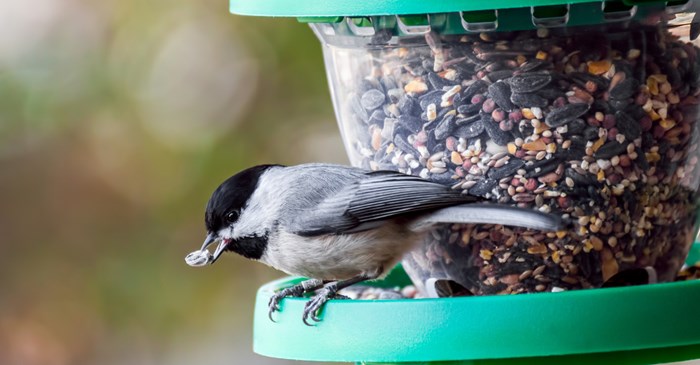Some birds are strictly solitary diners, while others will dine with big groups of friends. In any case, keep an eye on how bird politics play out at your feeder. Here are a few things to watch for.
Winter foraging
Birds are known for being territorial, which is in full force in the summer. But in the winter, these same species of birds will put their summer battles behind them and forage together. That means you may see groups like Northern Cardinals, Dark-eyed Juncos and House Finches eating together in the winter.
Displacement
Still, even in the winter, you can expect to see some bird one-upmanship playing out at the feeder. The classic example of feeder displacement is the so-called “feeder bullies”, like Blue Jays and European Starlings, who simply show up and cause the smaller birds to scatter.
But smaller birds draw the line, too. Watch them and see how they respond to new arrivals. Some dine in peace with multiple species, as long as they don't get too close to "their" seeds. Some spread their wings to appear big, while others lunge forward to chase them away.
Single diners
One species that is interesting to watch is the Black-capped Chickadee. While they forage together in the winter, they eat one at a time. There are a couple of things to know about how they behave at the feeder.
Chickadees observe a hierarchy in their flocks. So if you see one land on the feeder, another may quickly land and chase away the lower-ranking bird, snappishly reminding it to wait its turn!
Chickadees don’t usually eat at the feeder. They choose a seed and fly away with it to eat it in a tree or bush. They have small beaks, so what they do is hold the seed with their foot, and peck it open so they can get to the meat. (Finches, on the other hand, have conical beaks that are designed to crack open seeds with less effort.)
Try a mess-free blend, like Lyric Delite Mix. The shell-free mix appeals to many species of birds, so you can sit back and watch how birds interact right outside your window.
